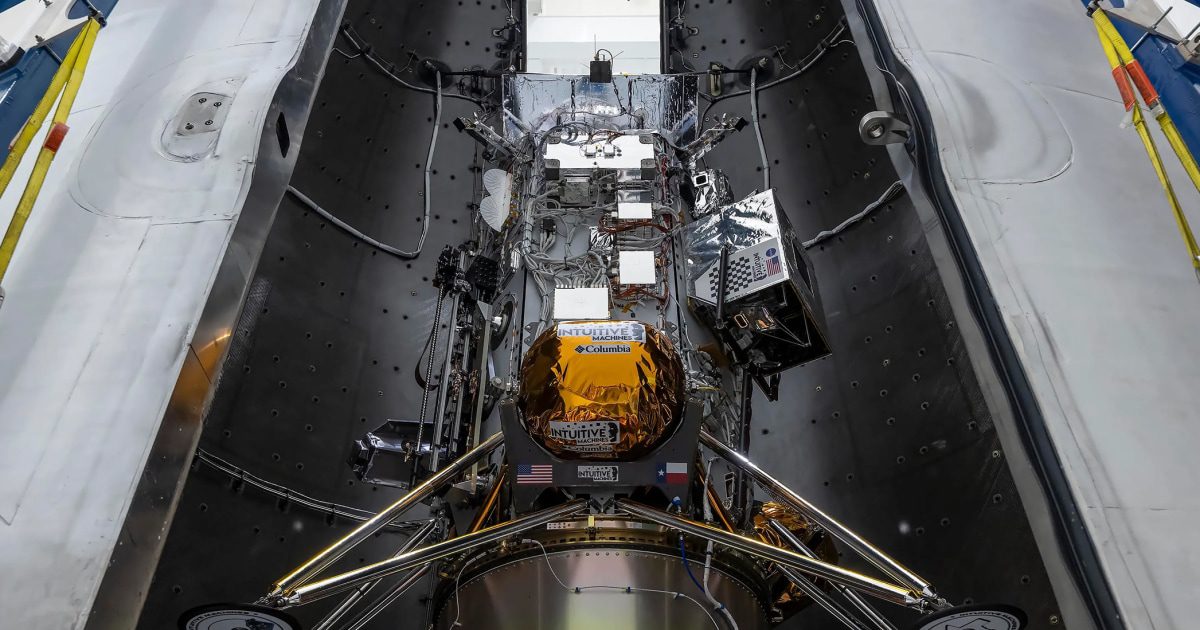
This week, a groundbreaking robotic lunar lander is set for launch, signaling the second lunar mission from a pioneering company that made history last year as the first private entity to achieve a successful moon landing.
Named Athena, this spacecraft was engineered by Intuitive Machines, based in Texas. It will be equipped with a drilling apparatus and various instruments designed to analyze the chemical composition of rocks and soil beneath the moon’s surface.
This mission is part of NASA’s Commercial Lunar Payload Services initiative, created to encourage the development of lunar landers by private companies.
The target landing zone is a plateau in the moon’s southern polar region, specifically on a prominent, flat-topped mountain known as Mons Mouton.
The lunar south pole holds significant interest for NASA due to its potential wealth of water ice within the area’s permanently shadowed craters. This water may play a crucial role in efforts to establish a sustainable human presence on the moon. The Athena mission will specifically seek to identify the possibly subsurface water, which could be vital for upcoming manned lunar missions.
Scheduled for launch on Wednesday at 7:17 p.m. ET, Athena will ride a SpaceX Falcon 9 rocket from NASA’s Kennedy Space Center in Florida.
In addition to Athena, the same rocket will deploy a moon-mapping satellite developed by NASA called Lunar Trailblazer.
These missions are part of a week rich with space launches; NASA plans to launch its SPHEREx space observatory into orbit on Thursday. This satellite aims to create a three-dimensional map of the sky and investigate the universe’s origins.
Simultaneously, SpaceX is gearing up for the eighth test flight of its Starship megarocket set for Friday.
Over the weekend, another robotic lunar lander, developed by Firefly Aerospace, will attempt to land on the moon.
Once launched, the Athena lander is expected to spend approximately one week traveling to the moon. If everything proceeds as planned, it could make its landing as early as March 6.
This mission also aims to evaluate a 4G communication system designed by Nokia for use on the lunar surface. According to Nokia, this network could facilitate data transmission from Earth to the moon or help relay communications and telemetry between various spacecraft on the lunar surface.
During its multi-week mission, Athena will deploy a drone named Grace, which is designed to perform several hops around the landing site. This hopping robot is anticipated to explore around 650 feet, including a nearby crater to search for ice deposits and signs of hydrogen, as stated by Intuitive Machines.
Intuitive Machines achieved a historic milestone in February 2024 when its Odysseus lander successfully touched down near Malapert A crater, close to the moon’s south pole. This accomplishment marked the first successful lunar landing by a private company and the first American spacecraft to land on the moon in over 50 years, since the Apollo 17 mission in 1972.
However, the Odysseus lander tipped over on the lunar surface, limiting its ability to collect the intended amount of data, although the landing itself was still considered a success.
This time, Intuitive Machines is determined to achieve a stable landing.
NASA aims to eventually partner with some of the companies involved in the Commercial Lunar Payload Services program to transport scientific instruments and cargo to the lunar surface, aligning with the agency’s broader objectives of returning astronauts to the moon.









